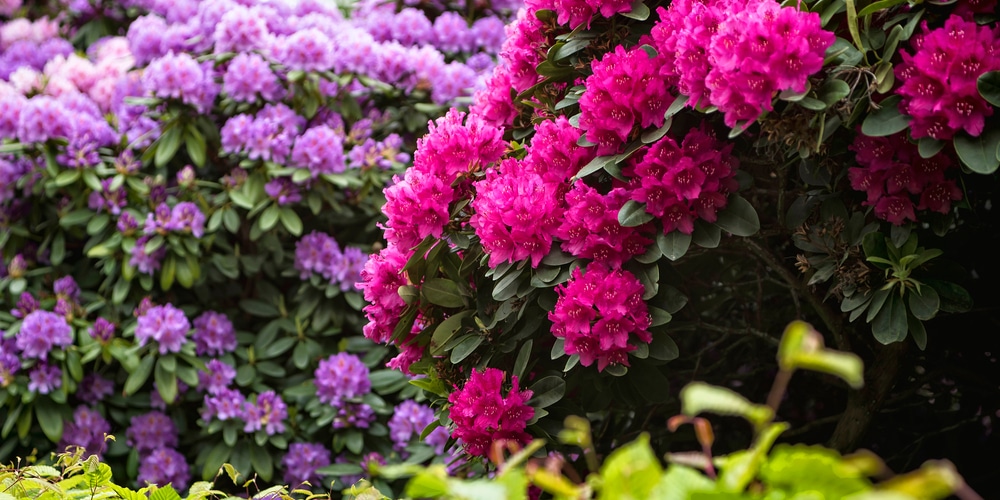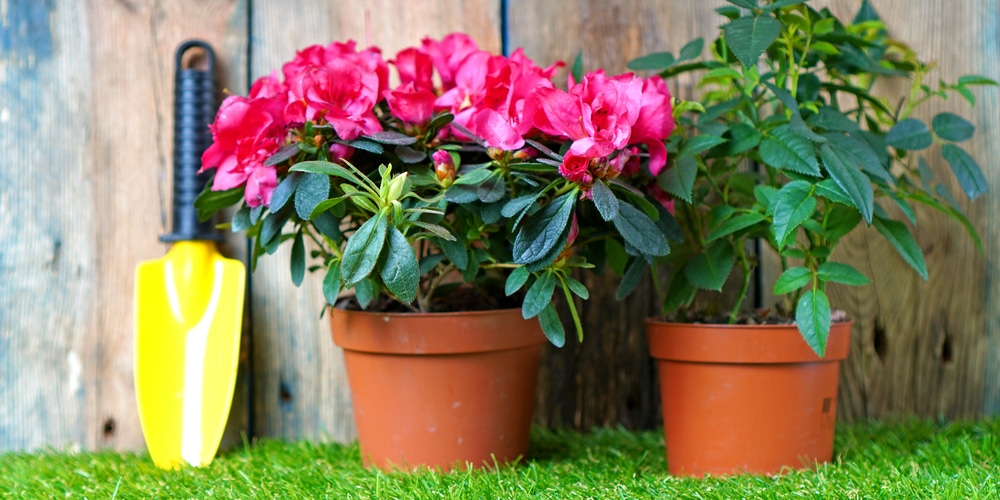Rhododendrons are lovely shrubs that can increase the aesthetics of your garden. They come in different shapes, sizes, and colors and are relatively easy to grow. They are the ideal addition to your landscape if you are looking for a foundation specimen, an attractive hedge or screen, or a plant to place in a container.
Because of their requirements, for years, gardeners in the colder regions could not grow rhododendrons successfully. Indeed, these plants usually prefer temperate climates. Luckily, that has changed now. Today you can find species that will survive even cold winters and frosts. Breeders have developed cultivars that thrive even at -45F.
To help you manage your delicate-looking shrubs in this area, we put together this “Rhododendron Zone 4 Essential guide.” Here, you’ll find everything you need to know to make the most out of these plants and to select the variety that best suits your local weather.
Rhododendron Zone 4
Rhododendrons are spring bloomers that add plenty of color to any garden. They attract plenty of beneficial pollinators and stay reliably evergreen even during the coldest months of the year. While most varieties are hardy between hardiness zones 5 and 9, you can find species that thrive in zone 4 (and even colder regions!).
In general, you should place your rhododendrons under partial shade. Choose your plants carefully to ensure you select a variety that will thrive in your garden. The soil should be acidic (pH between 4.5 and 6.0), rich, and moist. If you can’t offer those conditions naturally, amend your soil.
Add compost, peat moss, or manure if your soil is poor. Because of their shallow roots, rhododendrons need mulch to prevent drying out. Apply several inches of organic matter before winter arrives to regulate the soil temperature and protect your plants from the harshest frosts.
Place your plants under full sun to increase flower production and minimize pests and diseases. In zone 4, we recommend you plant your rhododendrons in early spring to limit exposure to harsh temperatures and allow your shrubs to establish before the increase in temperatures and get strong for the winter.
Keep reading to discover which varieties work best for zone 4!
Varieties that Thrive in Zone 4
While not all rhododendrons are suitable for zone 4, you can select species that withstand cold temperatures for your garden. Here is a list of our favorite options.
Rhododendron April Rose
Rhododendron April Rose produces early spring fragrant blooms that will enhance your garden’s look. It is a semi-dwarf shrub that delivers delicate purple flowers. The plant grows between three to four inches in height under ideal conditions. Its dense foliage turns reddish-bronze in the fall. This species can withstand temperatures as low as -25F. Under optimal conditions, it will give you plenty of flowers and attract several pollinators each year.
Golden Lights
Golden lights rhododendron tolerates even the colder winters of zone 3, so you can successfully add it to your garden. The compact shrub produces flowers between late spring and early summer. Golden lights’ orange and red flowers are fragrant and attract several species of butterflies. The olive green foliage resists most pests and creates a stunning backdrop to your garden.
Mount Saint Helens
Mount Saint Helens is a medium-sized shrub with multi-colored blooms. The flowers are rich salmon pink with a golden center. This might be your best choice to add more color to your garden. The plant is versatile and adapts to various climates. Its leaves become golden in the fall, adding some character to your garden when most other plants are either bare or dormant.
Rosy Lights
Another cold-hardy variety of rhododendron you should consider for zone 4 is Rosy Lights. This compact plant is a hydrating that opens between late spring and early summer and produces funnel-shaped deep rose flowers with orangy details. The dense foliage turns brown in the fall.
Rhododendron Zone 4: Conclusion
As you can see, it is possible to grow rhododendrons even in colder regions. Yes, you will have to be more careful, but the efforts will be worth it.
Choose a variety that will withstand zone 4’s cold winters to avoid headaches. Plus, ensure you provide your plants with all they need to thrive. You might have to make amendments to the soil. Keep an eye on your plants to monitor pests and diseases and take prompt action as soon as you can.
Related Article: Best Time of Year to Plant Shrubs

